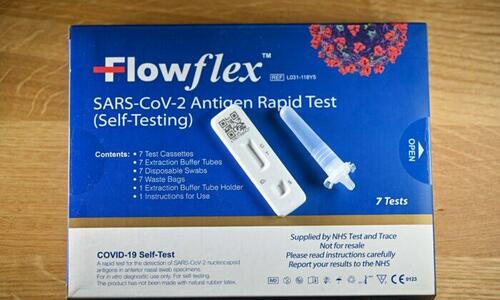Newly emerging data suggest the Pfizer-BioNTech Covid vaccine works substantially less well at preventing infection and hospitalizations in children aged 5 to 11 than it does in those aged 12 to 17 — a finding that is raising questions about whether the companies chose the wrong dose for the younger children.
The data, from New York state, show a rapid and substantial decline in protection after vaccination in children in the younger age group, with efficacy against infections dropping off more quickly and dramatically than the declines seen in children aged 12 to 17. The study also found a significant, but less steep, decline in protection against hospitalizations.
The findings, compiled by researchers working for the New York State Department of Health, were posted Monday on a preprint server; the study has not yet undergone peer review.
The New York findings, along with data from several other databases, were recently presented to the Covid vaccine work group of the Advisory Committee on Immunization Practices, independent vaccine experts who advise the Centers for Disease Control and Prevention, sources told STAT.
The data come on the heels of disappointing results from Pfizer trials of an even lower vaccine dose in children under the age of 5. And they will raise questions about whether, in trying to find doses that were both protective and tolerable in children, the companies failed to hit the mark for both age groups.
Pfizer would not say if it is exploring the possibility that the dose used in children might be too low, but said it is “confident in the protection and safety” of its Covid-19 vaccine.
“Our updates earlier this year on pursuing a 3-dose schedule for the pediatric population were informed by the effectiveness data for three doses of the vaccine for people 16 years and older, and the early laboratory data observed with Delta and other variants of concern, including Omicron, which suggest that people vaccinated with three doses of a Covid-19 vaccine may have a higher degree of protection,” it said in an emailed statement.
But John Moore, a virologist at Weill Cornell Medical College, said given the findings of this study, it’s hard to see how the lower efficacy in children aged 5 to 11 could be due to anything but the lower dose they received. In the study, children aged 12 had the highest vaccine efficacy of all age groups in both cohorts.“The striking difference between 11- and 12-year-olds can only be explained by the three-fold dosing reduction in the younger children. The one-year age difference is highly unlikely to make any other factor relevant,” Moore said by email. “The 11-year-olds got the 3-fold reduced dose, the 12-year-olds the standard dose.”
The New York study analyzed health records for Covid cases in children and teens from Dec. 13, 2021 to Jan. 30, 2022, a period during which the Omicron variant was fast replacing all other forms of the SARS-CoV-2 virus in the country. Covid vaccines are not as protective against Omicron as they were against earlier versions of the virus, especially without a booster shot.
The state recorded more than 850,000 Covid cases in adolescents aged 12 to 17 during that time, and about 365,000 in children aged 5 to 11.
Over that period, two-dose vaccine protection against infection for kids aged 5 to 11 declined from 68% to 12%; the vaccine’s effectiveness at preventing hospitalization declined from 100% to 48%.
But two-dose protection against infection for children aged 12 to 17 only dropped from 66% to 51%, and protection against hospitalization from 85% to 73%.
“Our data support vaccine protection against severe disease among children 5-11 years, but suggest rapid loss of protection against infection, in the Omicron variant era,” the researchers wrote. “Should such findings be replicated in other settings, review of the dosing schedule for children 5-11 years appears prudent.”
The adult Pfizer regimen — used in anyone aged 12 and older — is two doses of 30 micrograms apiece, given 21 days apart. Children 5 to 11 years old receive a dose that is one-third that size, two doses of 10 micrograms apiece. And in studies of children under 5, the dose is further reduced, with the children aged 6 months to 4 years getting two 3-microgram doses. The vaccine is not yet authorized for use in children under 5.
In December, Pfizer announced that two doses of the vaccine in children under 5 had not generated the same level of antibodies as was seen after two doses in people 16 to 25, which was being used as a proxy for protection. It said it would give the children under 5 a third dose to see if that achieved the required level of protection.
But then as Omicron cases spiked across the country, the Food and Drug Administration revealed it was considering a rolling authorization for the vaccine for children under age 5, allowing parents to start vaccinating their children while waiting for the third dose. The rationale was that the risk-benefit equation had shifted with Omicron.
A meeting of the FDA’s vaccine advisers, the Vaccines and Related Biological Products Advisory Committee, was scheduled for mid-February. But before the group could meet the FDA and Pfizer announced the plan was on hold. The plan is now to wait for the third-dose results before considering authorization in this age group.
https://www.statnews.com/2022/02/28/pfizer-covid-vaccine-kids-5-11/
